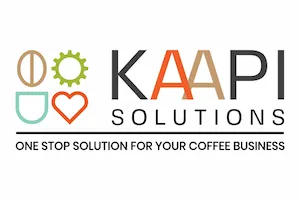At INFODOT, we understand the critical role IT plays in driving business success. However, with the increasing complexity of the digital landscape, organizations face a myriad of IT challenges, including security vulnerabilities, compliance gaps, and operational inefficiencies.

IT Audit and Compliance Support ensures that an organization’s IT infrastructure adheres to regulatory standards and internal policies. This process involves evaluating IT systems, data security, and operational controls to identify vulnerabilities and risks. A comprehensive IT audit validates the organization’s ability to maintain data integrity, safeguard sensitive information, and comply with legal requirements.
By addressing IT compliance and audit needs, businesses can enhance operational efficiency, reduce potential penalties, and build trust with stakeholders. Regular audits provide actionable insights to align IT processes with industry benchmarks, ensuring seamless compliance while minimizing cyber threats. Compliance IT audit is vital for maintaining secure and compliant systems.




“As our IT support team, Infodot is quite reliable. No matter the size of the issue, we know that when we call or email, we will get a response back from your team. Your commitment to customer service is highly appreciated. Infodot has helped solve a lot of day-to-day IT challenges that were previously creating bottlenecks for us.

“As an early stage start-up, the engineering team was fully focussed on our cloud infrastructure and we lacked time and skill to manage office IT infrastructure. This created many bottlenecks for us – unreliable office internet connectivity, unnecessary expenditures due to lack of regular maintenance etc. Once Infodot took up the upkeep of our office IT infrastructure, we could immediately recognize the value they brought in. New internet connectivity architecture was proposed and implemented by Infodot first. It really helped solving our office internet connectivity issues and made our office network more secure. As a co-founder, I also would like to mention that they are accommodative and they understand an early stage start-up’s financial constraints. We are happy with their services and would definitely recommend them.”

We specialize in addressing IT gaps identified by audit agencies, ensuring your organization’s IT infrastructure is secure, compliant, and optimized. Our services include:
IT audit services play a critical role in ensuring that an organization’s IT infrastructure aligns with regulatory standards, operational objectives, and security requirements. Below are some common use cases:
IT audits help organizations comply with industry regulations like GDPR, HIPAA, or ISO 27001. By evaluating IT systems against these frameworks, companies can avoid legal penalties and ensure adherence to data protection laws.
Through detailed risk assessments, IT audits identify vulnerabilities in IT systems, networks, and applications. This helps organizations implement robust security measures to safeguard against potential cyber threats.
IT audits ensure that disaster recovery plans and backup systems are effective and reliable. This guarantees minimal disruption during unforeseen events like system failures or cyberattacks.
Audits assess the compliance and security measures of third-party vendors who handle critical business data. This reduces the risk of supply chain breaches and ensures vendors align with the organization’s security standards.
By identifying inefficiencies in IT operations, audits provide actionable recommendations to optimize resources, reduce costs, and improve overall productivity.
IT audits are essential during M&A processes, as they assess the technological and compliance status of the organization being acquired.
Leveraging IT audit services ensures secure, efficient, and compliant IT environments, vital for business success.
INFODOT will help identify and address a variety of IT gaps that may hinder compliance efforts. Here are some of the most common gaps and how providers can help:
VAPT stands for Vulnerability Assessment and Penetration Testing. It’s a comprehensive security testing approach designed to identify and address cybersecurity vulnerabilities within an organization’s IT infrastructure.
By conducting regular VAPT assessments, organizations can strengthen their security defenses, reduce the risk of cyberattacks, and protect their sensitive data.

Infodot provides a comprehensive range of IT services, including co-managed support, cybersecurity, cloud solutions, and IT consultancy, designed to optimize your business operations.
Co Managed IT Service This Co managed IT Support & Services approach where a business
Secure your future. Book a free intro call to explore how our IT Audit and Complaince Support can safeguard your data and minimize downtime.
Audit and compliance ensure a company follows laws, standards, and internal policies. Audits review systems objectively, while compliance keeps practices aligned with legal and industry rules to reduce risks.
An IT compliance audit reviews if a company’s IT systems follow regulations. It checks data security, privacy, access controls, and policies based on industry standards.
The compliance audit process includes:
IT compliance ensures legal and regulatory adherence. IT audit evaluates IT systems to find improvement areas. Compliance focuses on legal standards, while IT audit checks system effectiveness.
A compliance audit checklist guides auditors through key items like data protection, access controls, cybersecurity, and backups, ensuring all areas are reviewed.
The main function of an audit is to confirm if a business’s operations, processes, and reports are accurate, compliant, and effective.
A compliance audit checks if a company follows all required laws, standards, and policies, focusing on risk prevention and adherence to rules.
To pass a compliance audit:
A GDPR audit is a compliance audit example, ensuring companies handling EU data meet GDPR data protection standards.
Compliance audits: